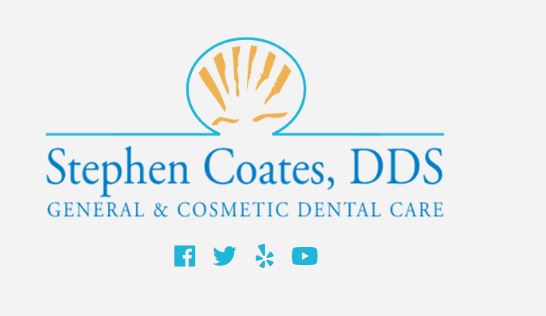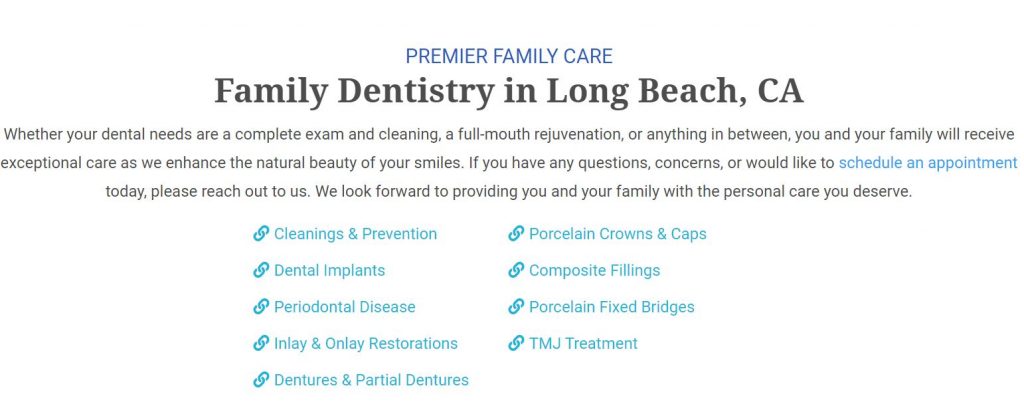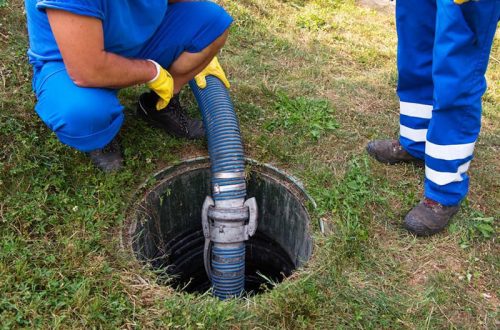
How Dentists Can Make Your Teeth Whiter
If your teeth have become stained from coffee, tea or wine, or you simply want to brighten up your smile, cosmetic dentistry can provide the solution.
Cosmetic dentistry at Stephen Coates DDS seeks to enhance the aesthetics of teeth, gums and bite by improving color, position, shape, size, alignment and overall smile aesthetics.
What Is a Family Dentist?
Family dentists are dental practitioners who provide comprehensive oral health services for your entire family, from cleanings and exams to fluoride treatments and sealants. With them, you won’t have to worry about anything when it comes to taking care of your family’s oral needs throughout life.
A great family dentist can save you from costly dental treatments and prevent common issues like tooth decay. Furthermore, they provide education about oral health and provide tips on how to take better care of your teeth at home.
Cleanings & Prevention: Having your teeth professionally cleaned is one of the most essential elements of good oral care. It allows your dentist to remove any plaque or tartar buildup that cannot be eliminated through normal brushing and flossing alone, as well as detect any larger dental issues that require more extensive treatment. Additionally, getting a cleaning helps protect you against future dental emergencies that could require more extensive action.
Furthermore, regular dental cleanings are essential for decreasing your risk of heart disease and strokes. Plaque and tartar buildup on teeth can lead to serious health problems; luckily, your dentist is trained in detecting these problems early.
Dentures & Partials: If you’re missing teeth, your family dentist can provide solutions that are both affordable and comfortable. They may also suggest cosmetic treatments like whitening or veneers.
Porcelain Crowns & Caps: Another common dental service provided by family dentists is porcelain crowns and caps. These treatments can restore damaged or worn-down teeth and give you a beautiful smile.
Dental Implants: Your family dentist can provide dental implants to replace missing or damaged teeth and restore your overall dental health. Dental implants are the most reliable solution for replacing missing teeth and improving overall dental function.
Teeth Whitening: Your family dentist can assist you in choosing the most effective whitening treatment for your individual needs. Selecting the correct whitening process is essential, as it helps ensure that your teeth will not yellow over time.
Periodontal Disease: A family dentist can help manage and treat periodontal disease, an inflammation of the gums that can cause chronic pain and damage to teeth. While treating this type of gum disease may seem challenging at first glance, family dentists use special tools to fight it off and minimize your chances for experiencing severe or long-term issues.
Missing Teeth: Missing teeth can make it difficult to eat and speak properly, which in turn has an effect on your oral health by placing you at greater risk for infections and other issues that could negatively affect it.
Maintaining a beautiful, bright smile can give you great confidence and boost your self-esteem. Visiting your family dentist at least twice a year is essential for maintaining this beautiful trait, as well as to prevent any oral health issues from arising.
Your family dentist is your go-to for maintaining a beautiful, healthy smile for life. They can teach you proper oral hygiene practices and suggest products that work best for your family. Plus, they may suggest preventive treatments and procedures to keep your smile looking its best in years to come.

How Does Whitening Work?
Your smile is a critical factor in how others perceive you. It conveys an image of youthful vitality and glowing health. A cosmetic dentist can help you achieve the smile of your dreams through whitening treatments and other options.
Whitening is a treatment that makes teeth whiter by eliminating stains, revealing their natural color. Teeth become darker with age but stains can also be caused by medications, foods, drinks and other factors.
Starting the whitening process, your dentist applies a specialized bleaching solution to your teeth. This peroxide-based chemical penetrates into your enamel and breaks down dark pigment molecules responsible for stains. It may take multiple treatments to achieve your desired level of whiteness.
Once the bleaching is complete, your dentist will apply fluoride to protect your teeth and reduce sensitivity. In order to maximize results, it’s best to maintain an oral hygiene regimen and abstain from certain foods and drinks such as coffee and red wine for one or two days in order to allow the whitening agent to fully take effect.
After one month, most people will notice a subtle improvement in their tooth color. Your dentist may suggest repeating the whitening procedure as needed to maintain your smile’s ideal look.
No matter which teeth whitening procedure you select, remember that a brighter smile can give you increased self-assurance and enhance your self-image. Plus, it may lead to healthier relationships with friends and family members as well.
In addition to teeth whitening, you can also enhance the aesthetic appeal of your smile by getting cosmetic tooth additions such as veneers or crowns. Your cosmetic dentist will advise the best option for you based on individual needs and objectives.
The teeth themselves consist of a hollow chamber (pulp) encased by yellow hard substance called dentin. An outer layer of smooth, hard crystalline enamel covers this dentin layer for aesthetic beauty and protection.
The American Dental Association (ADA) defines teeth whitening as any method that can make a patient’s teeth appear whiter by either bleaching or polishing away surface stains. Both methods are effective, but only bleach has the capacity to completely remove deep-seated discolorations in enamel and harden its underlying tooth structure.
What Are the Options?
Cosmetic dentistry procedures can be employed to enhance the aesthetic of your smile. These treatments offer a great way to achieve that perfect smile and work in conjunction with regular dental care for optimal results.
The most commonly performed cosmetic dentistry procedure is teeth whitening. This non-invasive and painless treatment can be completed in your dentist office with dramatic results in just one session.
Another cosmetic dentistry treatment is tooth reshaping and contouring. This is a great option for people who have misshapen or chipped teeth. Your dentist will use a drill to straighten out your teeth and give them a more even shape.
Reshaping teeth with tooth reshaping is a cost-effective and non-invasive alternative to other procedures that necessitate the removal of enamel. This simple process can be completed at the dentist office within an hour and costs just $250.
Porcelain veneers are an increasingly popular dental treatment that can be used to address various smile problems. These thin pieces of custom-made tooth-colored porcelain are applied over the front surface of your teeth to cover up stains, discoloration, as well as restore chipped or broken teeth.
There are also many cosmetic dentistry procedures that can be done to enhance your smile. Dental crowns and bridges, for instance, can cover up gaps between teeth or replace missing ones. These treatments are easily done in the dentist office and will drastically enhance how attractive you appear when smiling.
What Are Lumineers Teeth?
Lumineers are a popular alternative to porcelain veneers and can be used to treat various dental issues. Because they’re thin, Lumineers can be applied directly onto teeth without the need for grinding or shaving away healthy tooth structure.
Lumineers can give your smile a whiter and brighter shine, but they cannot hide severely discolored or damaged teeth. This is because Lumineers are thinner than traditional veneers and could easily get stained by food or beverages. Furthermore, they may be more vulnerable to damage due to grinding or chewing hard foods, so it’s essential that you practice excellent oral hygiene after having them placed.
What Are Lumineers Costs?
Unlike traditional veneers, which require outside laboratories and can take anywhere from 10-14 days to create, Lumineers are created in-office by your dentist. This makes for a quicker process with only one visit needed for application. However, you will need six-month follow-up appointments after your Lumineers have been installed to check how well they’re holding up and ensure both teeth and gums remain healthy.
Why Opt For Lumineers Over Veneers?
Both Lumineers and veneers can address cosmetic issues like chips, discoloration, cracks, and gaps. But they have some distinct differences which make them unique; ultimately it will be up to your dentist to decide which option is best suited for you.
Porcelain veneers offer greater durability and longer-term value than Lumineers, but they require more invasive surgery that cannot be reversed. Furthermore, porcelain veneers tend to be more costly than their Lumineer counterparts.
Lumineers Are More Affordable than Traditional Veneers
Although Lumineers are less costly than veneers, the price will depend on how many teeth need treating and whether you opt for multiple sets or just one. You also have to cover any lab costs as well as anesthesia costs.
Lumineers Are Reversible
Some patients have had veneers removed due to dissatisfaction with the results. This often occurs when the veneers were too thin and caused chipping of natural tooth structure. With Lumineers however, you don’t need to worry about that since there’s little-to-no grinding required during placement.
Lumineers Are Custom-Made for You
At your initial appointment, you’ll meet with your dentist to discuss your treatment plan and decide if Lumineers are suitable. Your dentist then takes an impression or mold of your teeth which they send off to a laboratory that creates Lumineers. Once they receive it, they’ll craft two pairs of Lumineers that fit perfectly over existing teeth.
You can expect your Lumineers to last up to 20 years, though that isn’t guaranteed; they may need removal if you have cavities or gum disease.
If you decide not to keep your Lumineers, they can easily be taken out for an affordable fee. Lumineers offer an effective way to transform the shape, color, and alignment of your teeth without breaking your budget.
How Long Can I Whiten My Teeth?
Many of us desire a whiter smile, but many are uncertain how long whitening effects last. How long you may see results depends on both the type of whitening solution you select and your lifestyle habits.
To maximize the benefits of whitening, make sure that you use a whitener that is compatible with your teeth and gums. Your dentist can assist in finding one suitable for you.
Brushing and flossing more frequently can also extend the effectiveness of a tooth whitening product. Regular brushing and flossing help remove plaque and staining on teeth, which makes it harder for these treatments to work.
It is also essential to avoid foods and drinks that can leave stains on your teeth. These include coffee, tea, red wine, berries, and other dark or color-intensive fruits and vegetables – even if you wash them away with water after eating.
If your staining is extensive, professional whitening systems offer more dramatic outcomes. These typically provide minimal-to-good outcomes and can last from several months up to two years depending on the type of whitening used.
You can whiten your teeth at home using whitening strips, gels or pens; however, only use these products for 10-14 days at a time as overuse may cause chemical burns on the gums, sensitivity and other side effects such as enamel erosion.
Professional whitening treatments are significantly faster and more efficient than over-the-counter whitening products, plus it may be more affordable and safer for your teeth.
Dentists recommend that you try to minimize exposure of stain-causing substances like coffee, tea and berries as much as possible in order to maintain your teeth’s whiteness. It’s also beneficial to brush your teeth roughly 60 minutes after having consumed any drinks or foods which could leave stains on them.
Another alternative is mixing hydrogen peroxide with baking soda to create a toothpaste. You can use this homemade solution a few times a week, but be mindful of the amount of peroxide as too much may damage your teeth and cause sensitivity.
How Much Will Whitening Cost?
The cost of teeth whitening will depend on the method you select and how quickly you want to see results. Generally, in-office treatments are pricier than over-the-counter kits or strips available at drug stores or pharmacies.
Costs for in-office teeth whitening can range anywhere from $300 to $1,000 or more depending on the brand and your dentist’s fees. If you have insurance, some of these costs may be covered.
Whitening at a dentist office is one of the quickest and most efficient ways to brighten up your smile, saving you money on future cosmetic dentistry services. This is because newer restorative treatments like crowns or bonding can be matched with whiter teeth for an overall improvement in appearance.
Professional teeth whitening is more cost-effective than at-home solutions that may run up to $100 per box. Your dentist has the advantage of using a higher concentration of bleaching agent for more dramatic and long-lasting results compared to over-the-counter products.
Teeth whitening at the dentist can be completed within an hour and provide up to 5-7 shades whiter teeth in just one visit. This may be ideal for people who want a dramatic improvement to their smile but are unsure whether veneers or Invisalign will provide enough of a change.
Over-the-counter teeth whitening strips, gels and kits can be found at any grocery store or drugstore for about $20 to $100 per box. They’re more cost-effective than in-office options and can be used over several weeks for maximum benefit.
You can purchase whitening toothpastes and mouthwashes that contain active whitening ingredients similar to what your dentist uses. Prices for these items typically range between $3-7 per 4-ounce tube of toothpaste or $946mL bottle of mouthwash.
If you’re unsure whether a professional treatment is worth it, over-the-counter whitening kits can provide an affordable way to achieve a brighter smile and test if you like the results of teeth whitening. Cost will depend on the brand and type of whitening used, but should still be within reasonable price ranges.
Brushing your teeth twice a day
Brushing twice a day is an essential step to keep your smile looking bright and white. Not only will it freshen your breath, but it also helps prevent cavities and gum disease.
The American Dental Association recommends brushing your teeth for two minutes twice daily to promote good oral health and maintain pearly white teeth. You can set a reminder on your phone, stick a note in the bathroom or simply make it a habit that you must brush before leaving in the morning and before going to bed at night.
One of the reasons why the American Dental Association recommends brushing twice daily is to eliminate plaque that builds up over time. Plaque is a sticky, film-like substance containing bacteria which release acids which wear down tooth enamel and lead to decay.
Another reason to brush twice a day is to freshen your breath, which can be caused by food and drink or bacteria inhalers. A dry mouth leads to bad breath, so keep it moistened by drinking water or chewing sugar-free gum.
Saliva helps keep our mouths healthy throughout the day by wiping away bacteria and food particles. Not only that, but saliva also contains minerals which strengthen teeth while deterring bacteria from growing in your mouth.
In addition to brushing twice daily, it is also essential that you visit your dentist for a checkup and cleaning on a regular basis. This will enable them to detect any problems with your teeth or gums early so that serious oral health issues can be avoided before they worsen.
It’s essential to replace your toothbrush every three to four months. This is an ideal time to check for any splayed or irregular bristles, which could indicate that your brush is no longer performing as effectively as before.
It’s essential to remember that brushing more than three times a day or for longer than two minutes can weaken your tooth enamel and leave them susceptible to sensitivity. Furthermore, over-brushing can damage your gums and cause abrasion. To maintain healthy brushing habits, utilize a soft-bristled toothbrush with consistent pressure.
Flossing
Flossing is an integral part of oral hygiene, helping to remove plaque and food particles from between teeth. Additionally, flossing may prevent gum disease which in turn could lead to other health issues like heart disease or stroke.
Dental floss can make your teeth whiter and brighter than they might otherwise appear. Some dentists even suggest that you floss twice daily for maximum benefit and to keep both teeth and gums healthy.
Always floss between your teeth gently. Gripping the dental floss too roughly can damage your gums or cause gingival clefts. To avoid this, slip the floss gently between teeth and then rub it up and down to move it along.
When first starting to floss, you may find it challenging to get the floss between your teeth. If this is an issue for you, try using a water pick instead of regular floss for easier navigation between each tooth.
After you’ve mastered the technique, flossing between your teeth should become much simpler and less of an effort. Additionally, there are special floss products that are softer and more comfortable to work with – these gentle yet strong products have been specifically designed to be gentle on gums while still effectively removing plaque from around tooth surfaces.
Some floss products contain specific ingredients that have been scientifically proven to effectively remove plaque, food particles and stains from teeth. These can be an excellent way to keep your smile sparkling clean and bright when combined with other oral care tools such as whitening toothpastes and mouthwashes.
One type of floss that can be particularly effective at removing stains from teeth is hydrogen peroxide-infused floss. This product has been clinically proven to gradually and safely whiten your teeth over time while eliminating harmful bacteria responsible for cavities and gum disease.
Make sure not to forget to floss once a day, as not doing so will allow plaque and tartar to build up which cannot be removed without professional cleanings.




